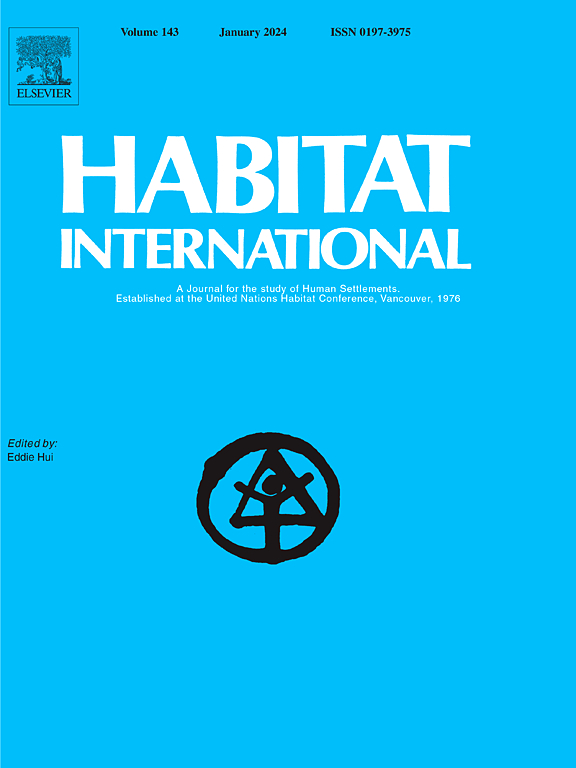Overregulated and Underserved: Regulatory overlap in infrastructure/service provision in Delhi's ‘informal’ settlements
IF 6.5
1区 经济学
Q1 DEVELOPMENT STUDIES
引用次数: 0
Abstract
This study is the first in-depth analysis of regulatory overlap in Water Sanitation Hygiene (WaSH) provision in urban ‘informal’ settlements. Using a mixed methods approach to map the spatial and functional footprint of government agencies, identify operational gaps or overlaps in agency activities, and examine its sources and consequences, this paper makes a case for regulatory overlap as a major challenge because it cripples infrastructure/service providers, not just users. Over 2012–2019, I conducted field observations at 20 settlements in Delhi, India, content analysis of 14 relevant city and national legislations, policies and plans, and interviews with (i) 56 settlement residents, (ii) 13 officials from the water, planning, shelter and municipal authorities, and (iii) 8 NGOs. I classified the emerging examples of regulatory overlaps into three categories: similar functional jurisdictions and adjacent spatial jurisdictions, different functional jurisdictions and similar spatial jurisdictions, similar spatial and functional jurisdictions. I found that overlaps result in burdensome transaction costs for Delhi's shelter authority, unintended public health and environmental impacts, and a diffused provider network that further fragments WaSH access. Overlaps were sourced to the disconnects between various legislations, or between legislations and other instruments—plans, programs, legal orders—that expanded the mandates of government agencies without updating corresponding legislations. This study suggests the need to take a network approach to understand the many international, national, and local actors dictating WaSH access in ‘informal’ settlements, and the instruments guiding them. Without that, waste will keep cycling from toilets to drains to public spaces, from one jurisdiction to another.
过度监管和服务不足:德里“非正式”定居点基础设施/服务提供的监管重叠
本研究首次深入分析了城市“非正式”住区水环境卫生(WaSH)服务的监管重叠问题。本文采用混合方法绘制政府机构的空间和功能足迹图,确定机构活动中的运营差距或重叠,并检查其来源和后果,将监管重叠视为一项重大挑战,因为它削弱了基础设施/服务提供商,而不仅仅是用户。在2012-2019年期间,我在印度德里的20个定居点进行了实地观察,对14项相关的城市和国家立法、政策和计划进行了内容分析,并采访了(I) 56名定居点居民,(ii) 13名来自水、规划、住房和市政当局的官员,以及(iii) 8个非政府组织。我将监管重叠的新例子分为三类:类似的功能管辖和相邻的空间管辖,不同的功能管辖和类似的空间管辖,类似的空间和功能管辖。我发现,这种重叠给德里的住房管理局带来了沉重的交易成本,对公共卫生和环境产生了意想不到的影响,而且分散的提供者网络进一步分散了WaSH的使用。重叠源于各种立法之间的脱节,或者立法与其他工具(计划、项目、法律命令)之间的脱节,这些工具扩大了政府机构的授权,而没有更新相应的立法。这项研究表明,需要采取一种网络方法来了解许多国际、国家和地方行为体,这些行为体决定了“非正式”住区中WaSH的获取,以及指导这些行为体的工具。如果不这样做,废物将继续从厕所到排水沟再到公共场所,从一个司法管辖区到另一个司法管辖区。
本文章由计算机程序翻译,如有差异,请以英文原文为准。
求助全文
约1分钟内获得全文
求助全文
来源期刊

Habitat International
Multiple-
CiteScore
10.50
自引率
10.30%
发文量
151
审稿时长
38 days
期刊介绍:
Habitat International is dedicated to the study of urban and rural human settlements: their planning, design, production and management. Its main focus is on urbanisation in its broadest sense in the developing world. However, increasingly the interrelationships and linkages between cities and towns in the developing and developed worlds are becoming apparent and solutions to the problems that result are urgently required. The economic, social, technological and political systems of the world are intertwined and changes in one region almost always affect other regions.
 求助内容:
求助内容: 应助结果提醒方式:
应助结果提醒方式:


